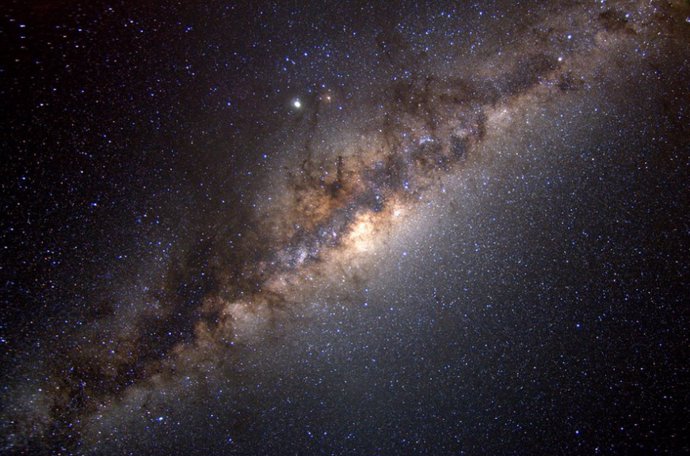MIT astronomers discovered three of the oldest stars in the universe, and they live in our own galactic neighborhood. – SERGE BRUNIER; POT
May 14. () –
MIT astrophysicists have discovered three of the oldest stars in the universe and it turns out that They live in our own galactic neighborhood.
The team detected the stars in the Milky Way’s “halo,” the cloud of stars that envelops the entire main galactic disk. According to the team’s analysis, the three stars were formed ago between 12,000 and 13,000 million years, the moment when the first galaxies took shape.
Researchers have coined SASS (Small Accreted Stellar System) stars as they believe each star once belonged to its own small, primitive galaxy that was then absorbed by the larger but still growing Milky Way. Today, the three stars are all that remain of their respective galaxies. They surround the outskirts of the Milky Waywhere the team suspects there may be more such ancient stellar survivors.
COSMIC FAMILY TREE
“These older stars should definitely be there, given what we know about galaxy formation,” he says. it’s a statement Anna Frebel, professor of physics at MIT. “They’re part of our cosmic family tree. And now we have a new way to find them.”
As they discover similar SASS stars, researchers hope to use them as analogs for ultrafaint dwarf galaxies, which are believed to be some of the first surviving galaxies in the universe. These galaxies are still intact today, but they are too distant and faint for astronomers to study them in depth.
As SASS stars may have once belonged to similar early dwarf galaxies, but are in the Milky Way and as such much closer, they could be an accessible key to understanding the evolution of ultrafaint dwarf galaxies.
“Now we can look for more analogues in the Milky Way, which are much brighter, and study their chemical evolution without having to chase these extremely faint stars,” says Frebel, whose research is published in Monthly Notices of the Royal Astronomical Society (MNRAS).
The team worked from stellar data collected by Frebel over the years from the 6.5-meter Magallanes-Clay telescope at the Las Campanas Observatory.
In particular, they were looking for ancient stars that formed shortly after the Big Bang, which occurred 13.8 billion years ago. At that time, the universe was composed primarily of hydrogen and helium and very low amounts of other chemical elements, such as strontium and barium.
Their search focused on three stars that were originally observed by the Magellan telescope between 2013 and 2014. Astronomers never followed up on these particular stars to interpret their spectra and deduce their origins.
They were able to determine the chemical composition of each one with various stellar models. The intensity of a particular feature in the stellar spectrum, corresponding to a specific wavelength of light, corresponds to a particular abundance of a specific element.
After completing their analysis, they confidently concluded that the three stars contained very low amounts of strontium, barium and other elements such as iron, compared to their reference star: our own sun. In fact, one star contained less than 1/10,000th the amount of iron to helium compared to today’s sun.
The low chemical abundance of stars hinted that they were originally formed between 12 and 13 billion years ago. In fact, their low chemical signatures were similar to those astronomers had previously measured in some ancient, ultrafaint dwarf galaxies. Did the team’s stars originate from similar galaxies? And how did they come to be in the Milky Way?
On a hunch, scientists checked the orbital patterns of stars and how they move across the sky. The three stars are located in different locations throughout the Milky Way halo and are estimated to be about 30,000 light years from Earth. (For reference, the Milky Way’s disk is 100,000 light years in diameter.)
THEY MOVE IN THE OPPOSITE DIRECTION
While tracking the movement of each star around the galactic center using observations from the Gaia astrometric satellite, the team noticed a curious thing: compared to most stars in the main disk, which move like cars on a race track, the three stars seemed to be going the wrong way. In astronomy, this is known as “retrograde motion” and is an indication that an object was once “accumulated” or attracted from somewhere else.
The fact that these three stars were orbiting in completely different ways from the rest of the galactic disk and even the halo, combined with the fact that they had a low chemical abundance, strongly demonstrated that the stars were indeed ancient and once belonged to dwarf galaxies. smaller ones that fell into the Milky Way at random angles and continued their stubborn trajectories billions of years later.














Add Comment